Dive into Seaweed
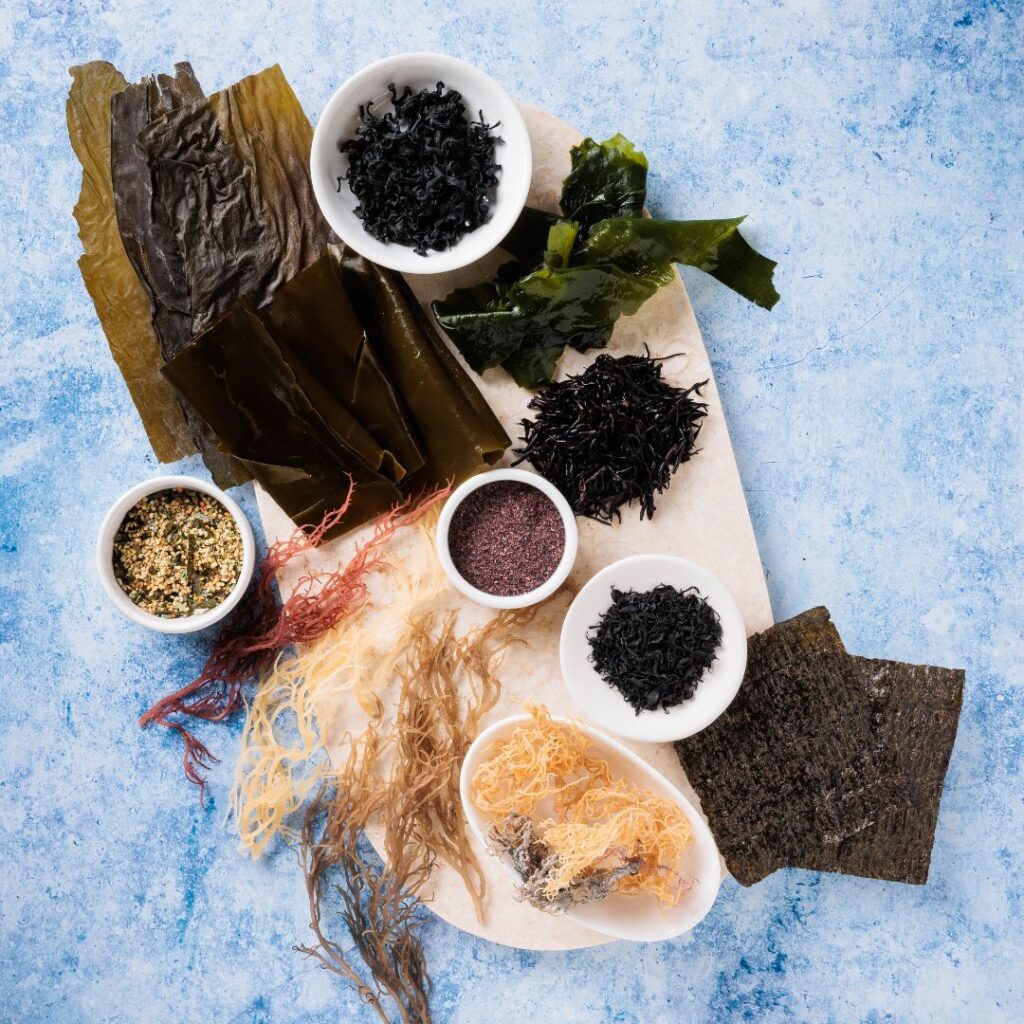
From algae to kelp to seaweed, a beautiful world of healthful, flavorful discovery awaits you under the sea.
The next time you go for a walk on the beach, keep an eye out for sea vegetation. It is one of the most healthful, sustainable food sources you can put on your plate. Our big beautiful planet is covered with more than 70% oceans—home to an amazingly rich, diverse ecosystem filled with foods that nourish life, from the tiniest plankton all the way up to biggest whales. Throughout history, people have understood just how important tapping into sea vegetables was for survival. Asian countries have been using seaweed for centuries in dishes like sushi and salads. Pacific islanders mixed it with fish and vegetables. And in the British Isles, seaweed was eaten with oatmeal.
Now we are looking to the oceans for sea vegetables because they offer an abundant, sustainable source of nutrients as our population continues to grow, thus stretching the limits of our planet to feed everyone. Just think—you don’t even have to use land, irrigation, or chemicals to grow sea vegetables—they are abundantly available for harvest in their wild, natural form.
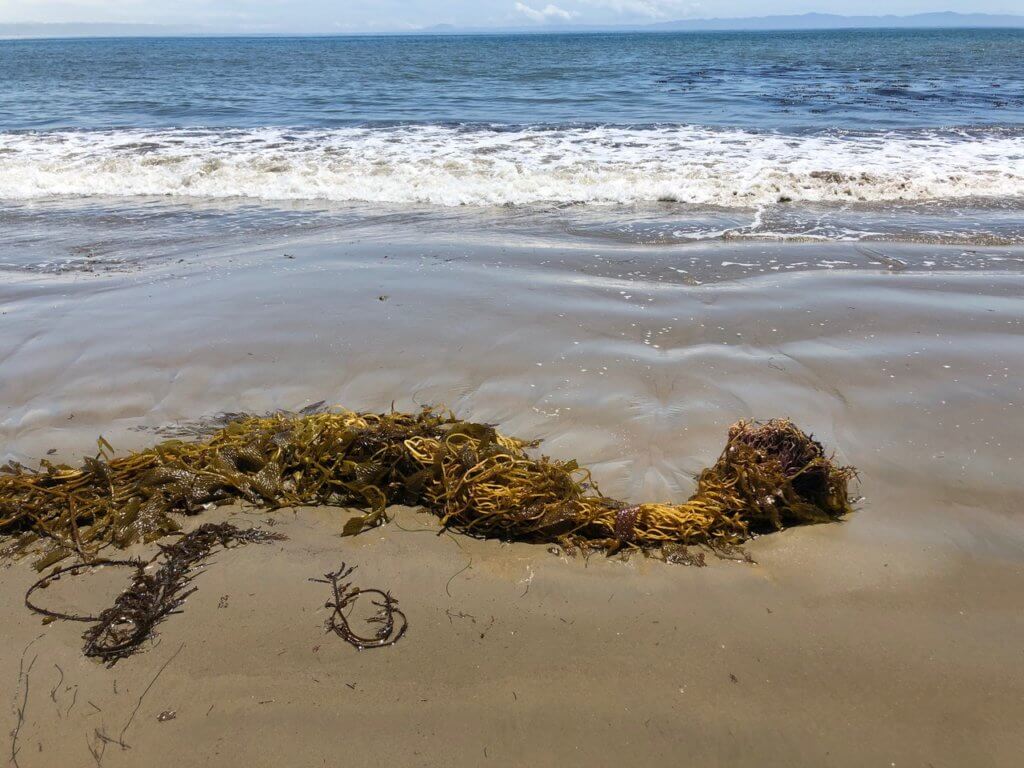
What are sea vegetables? They are actually marine algae, which come in brown, red or green forms. Marine algae, in general, are rich in fiber, vitamins A, C, E, and K, calcium, folate, iodine, iron, magnesium, niacin, omega-3 fatty acids, and protein. They also have unique nutrients, such as enzymes, and sulfur and antioxidant compounds linked to health advantages. Research has shown that seaweed is linked with reduced inflammation and lower risks of cancer, heart disease, and obesity. So, eat like a mermaid, and put a few sea veggies on your plate today.
Seaweed Types
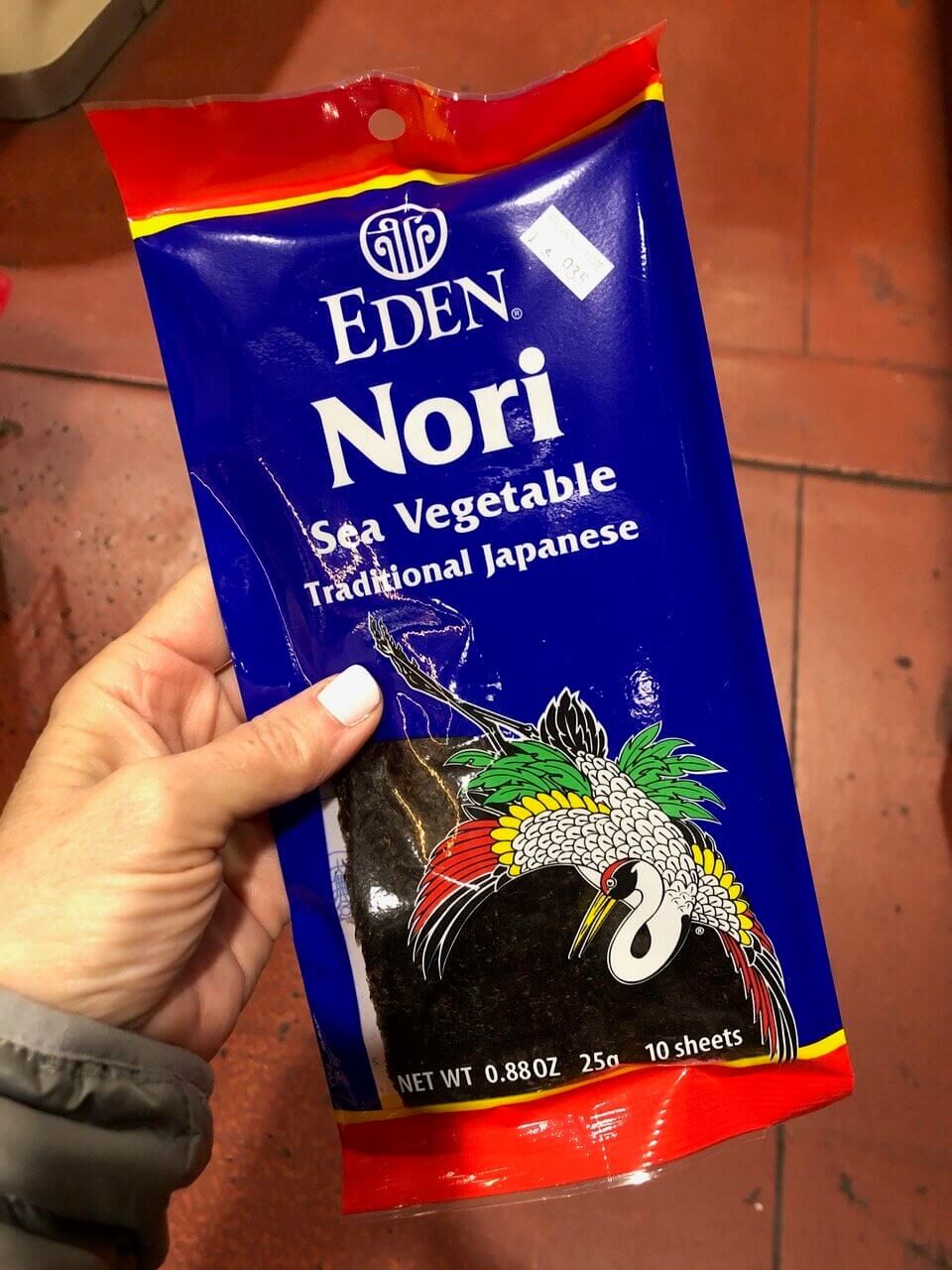
Nori
What Is It?
Nori is the Japanese word for edible seaweed. Nori sheets are processed almost like paper; the seaweed is chopped into small pieces, mixed into a slurry, poured into mats, and dried.
Where Does it Come From?
It mostly comes from Japan, Korea and China, but it is found naturally in most temperate seas in the zone between high and low tide. While it could be wild harvested, most of it is cultivated using floating nets in oceans.
What Does it Look Like?
It is a purplish-black seaweed that grows in a thin, flat blade.
What Is it Like?
It has a subtle, sea-like flavor, with a mildly sweet taste. The color can vary from dark red, brown, green, or black. This seaweed is very nutritious, containing 30-50% protein, and significant levels of vitamins A, C, niacin, and folic acid.

How Do I Use It?
You probably know this seaweed best from eating at a sushi restaurant, as it’s commonly used to wrap around rice balls. You can toast dried nori to bring out the flavor, then chop it, and sprinkle it over grain dishes, soups, or noodles, and stir it into breading before you batter and roast tofu or tempura to provide a touch of the sea. It’s also delicious in seaweed snacks—just slice nori sheets into small squares, drizzle with sesame oil and seasonings and toast.
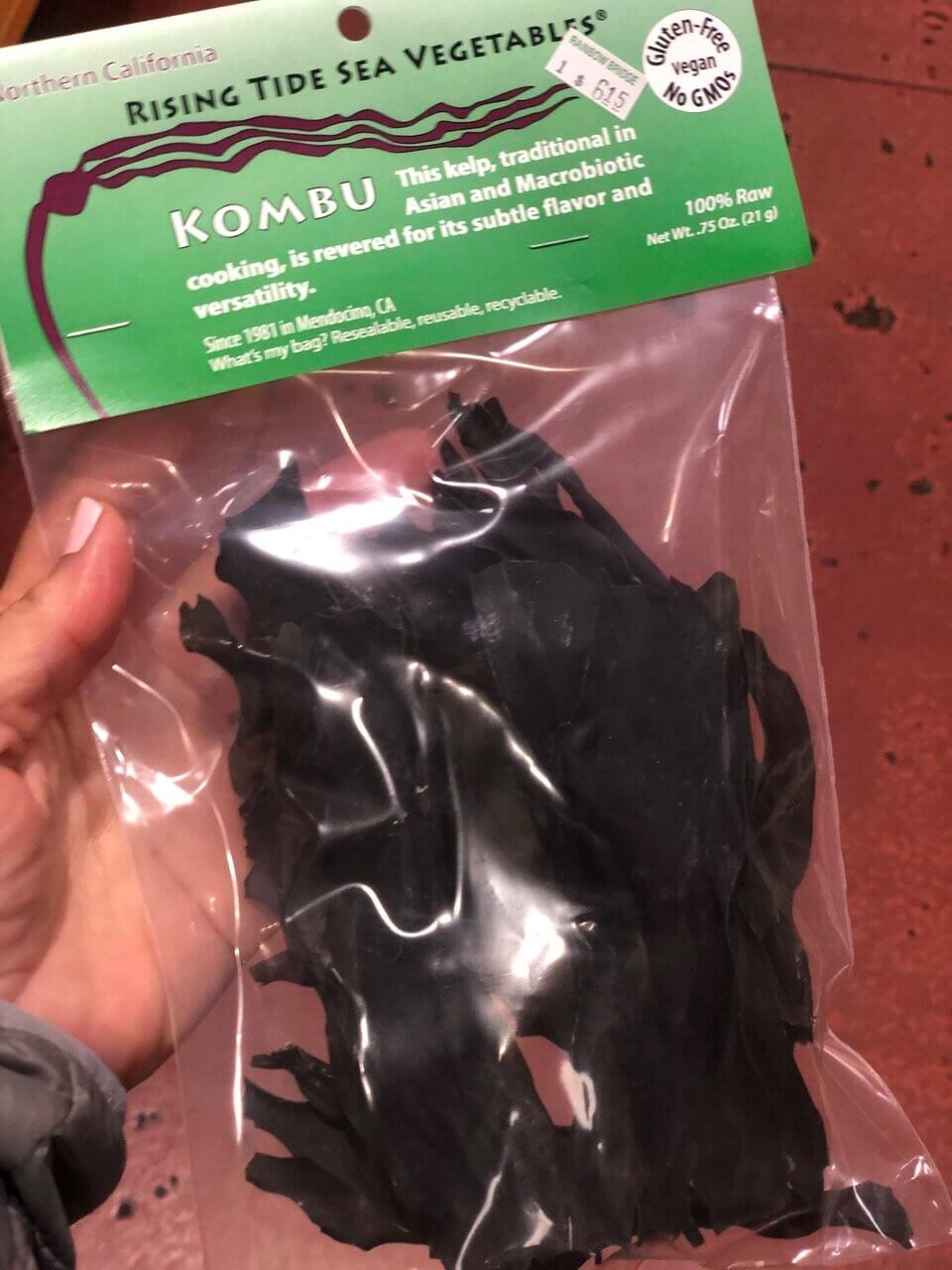
Kombu
What Is It?
This type of seaweed is kelp, which grows in underwater forests.
Where Does it Come From?
It is primarily harvested from natural sources in Japan, growing among the reefs in calm water, though it is cultivated in China and grows in North America, Scandinavia, Russia, and Australia too.
What Does it Look Like?
It is a long brown algae, and the leaves are commonly dried.
What Is it Like?
Kombu is rich in umami flavor, which can add a savory taste to dishes. It is about 10% protein, and contains more moderate levels of vitamins and minerals compared to other seaweeds, though it is richer in iron and high in iodine, which is an essential nutrient though too much can cause thyroid concerns.
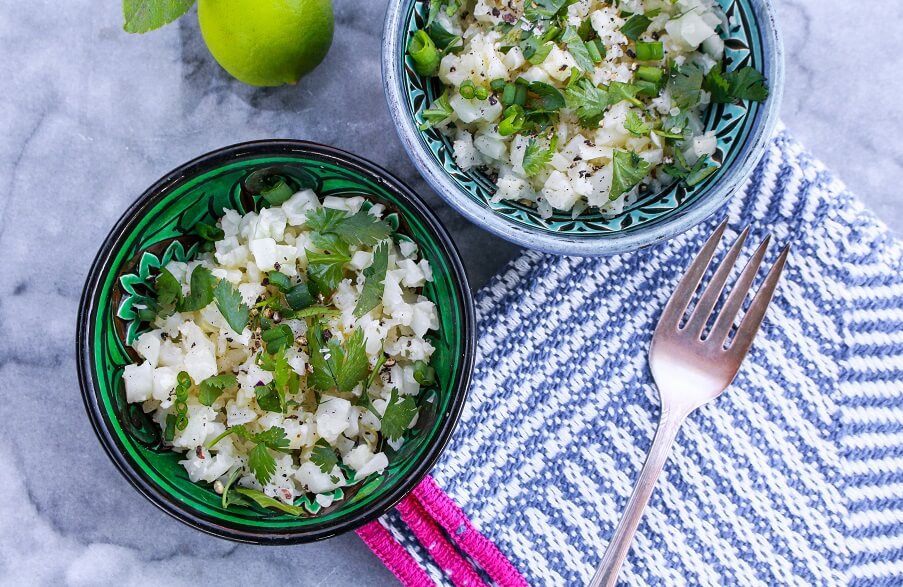
How Do I Use It?
This type of seaweed is probably best known in Japanese cuisine, as it is one of the main ingredients in the classic broth called dashi. It is also pickled and eaten as a snack. Try toasting it and adding it to rice and vegetable dishes.
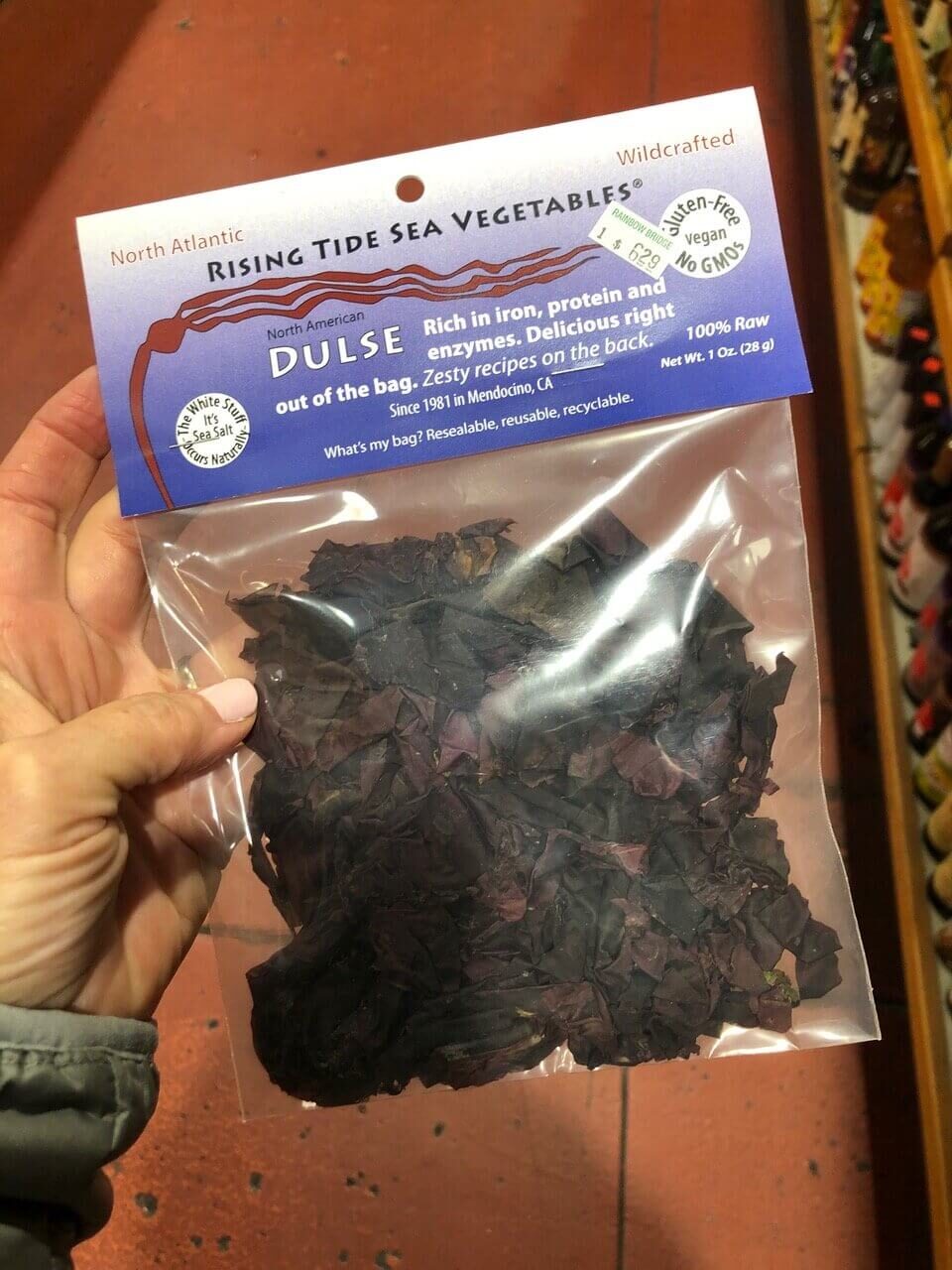
Dulse
What Is It?
It is a red algae with leathery fronds, which is harvested from rocks at low tide.
Where Does it Come From?
It is mainly harvested from Ireland and Eastern Canada, after which it is sun-dried.
What Does it Look Like?
It has deep burgundy leaves, and is available in flakes and powder form.
What Is it Like?
Dulse has a salty, sea-like flavor, which can take on a smokiness when it’s fried. This seaweed is a good source of potassium, iron, iodine, and vitamin B6.

How Do I Use It?
In Ireland, dulse is eaten raw like chewing tobacco, and it is added to soups and potato and fish dishes, while in Nova Scotia it is enjoyed as a salty snack to accompany cocktails. You can also fry the leaves in olive oil to make a crumbly, bacon-like topping to flavor salads and baked potatoes, or stir it into baked recipes, like breads and crackers.
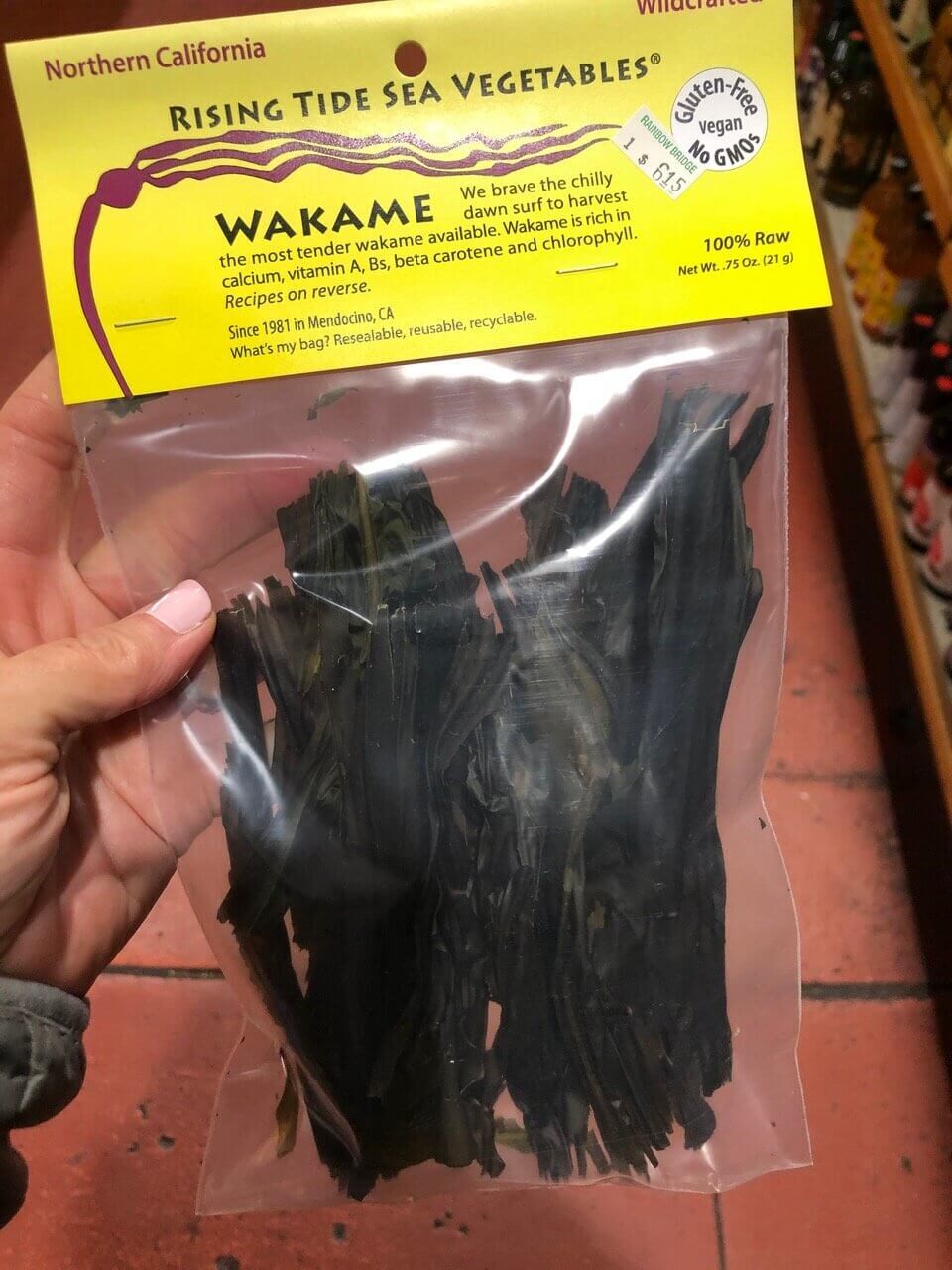
Wakame
What Is It?
This is a type of brown seaweed with fronds, available in fresh cut or dried form.
Where Does it Come From?
This seaweed is native to the cooler, coastal waters in Japan, Korea and China, but it now grows in other regions around the world, gaining a reputation for being an invasive species. It is commonly produced by Japanese and Korean sea-farmers, though it’s also been cultivated in Brittany, France.
What Does it Look Like?
When fresh or reconstituted from dried, it is bright green in color.
What Is it Like?
It has a mildly sweet flavor, and satiny texture. This seaweed is high in fiber, with good sources of B vitamins and minerals like manganese, copper, and zinc.
How Do I Use It?
You’ve probably had wakame in a bowl of Japanese miso soup as those slices of seaweed you find floating at the surface; or in a bright green seaweed salad featuring strands of wakame in vinegar. It’s also used in traditional Japanese fish dishes and Korean soups. Try adding it to noodle salads, soups and stews.

Spirulina
What Is It?
This is a type of blue-green algae, often available as a powder or supplement.
Where Does it Come From?
It is found world-wide in fresh and marine waters, flourishing in sunny climates and alkaline waters, such as those found in Greece, Japan, India, U.S., and Spain. It also is grown in ponds under controlled conditions.
What Does it Look Like?
It is a microscopic bacteria with spiral filaments, hence, it’s name. In powder form, it ranges from a deep green to teal blue color.
What Is it Like?
Spirulina is mostly sold as a fine powder, and it has a slightly green, sea vegetable taste. It is rich in protein, iron, B vitamins, copper, iron, beta-carotene, and unique compounds called phycocyanin. Preliminary research has linked spirulina to reducing inflammation and oxidative stress, and possible anti-cancer, cholesterol-lowering effects.

How Do I Use It?
It is excellent added to smoothies, along with fruit, nuts, and vegetables. In addition, you can mix it into beverages, energy balls, soups, puddings, and sorbet.
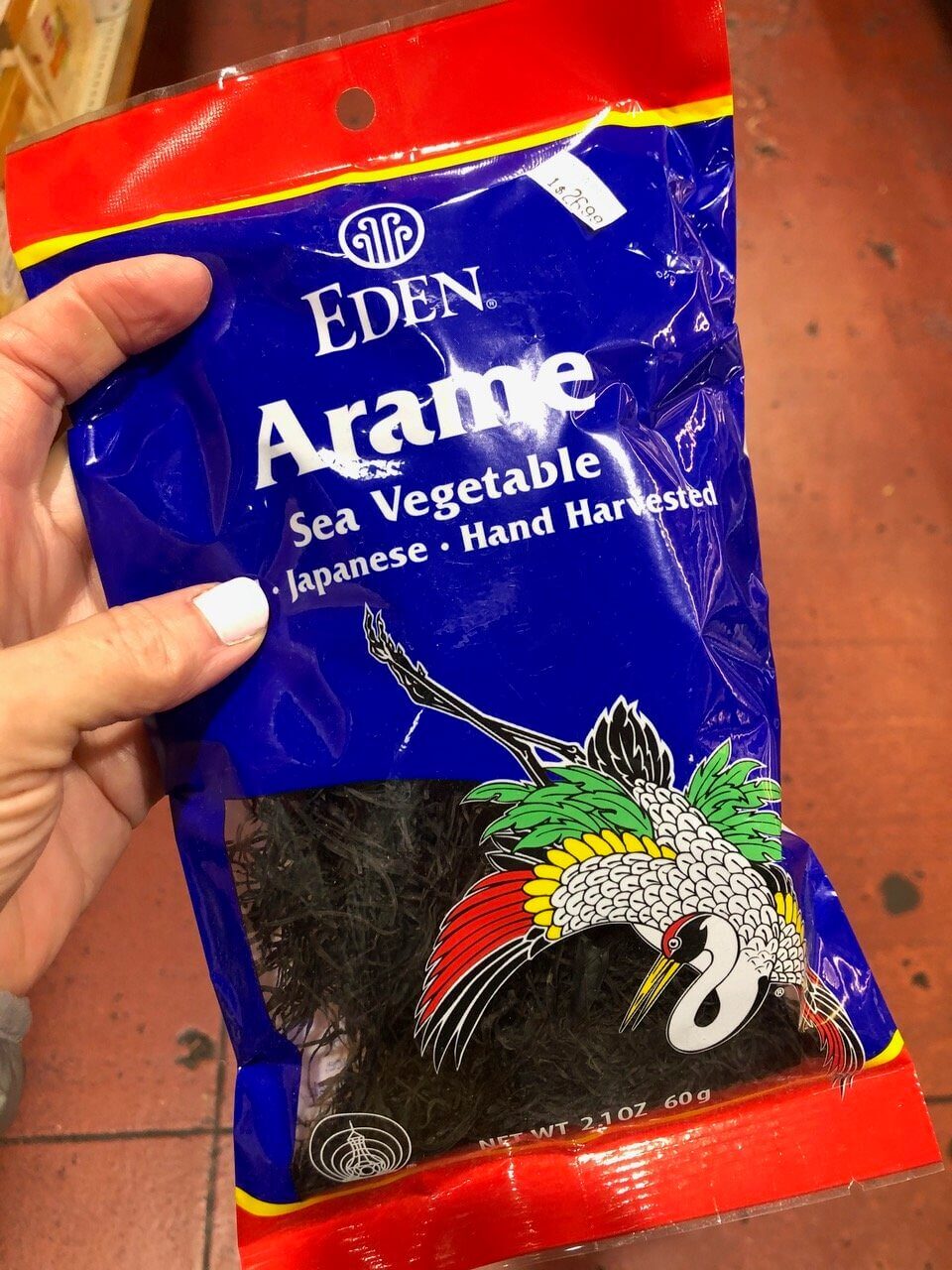
Arame
What Is It?
In the same family as kombu, this wavy sea vegetable with oval fronds is a brown algae.
Where Does it Come From?
It is indigenous to Japan, where arame attaches itself to rocks that lie under the temperate Pacific waters, but it is also cultivated in South Korea.
What Does it Look Like?
Usually available shredded and dried, it has dark brown strands and a firm texture.
What Is it Like?
This seaweed is milder and sweeter in flavor, with a softer texture. For many people new to sea vegetables, it may be a great first introduction. Arame is rich in fiber, calcium, magnesium, and potassium.

How Do I Use It?
This seaweed is delicious added to soups, stir-fries, sautéed vegetables, and salads. Try adding it to home-made veggie-burgers for a flavorful kick.
References:
- (2015, August 18). Ocean holds the key to superior nutrition and sustainability. Retrieved from: https://www.sciencedaily.com/releases/2015/08/150818131758.htm
- (n.d.). Seaweeds Used as Human Food. Retrieved from: http://www.fao.org/3/y4765e/y4765e0b.htm
- Schönfeld‐Leber, B. (1979). Marine algae as human food in Hawaii, with notes on other Polynesian Islands. Ecology of Food and Nutrition, 8(1), 47–59. doi: 10.1080/03670244.1979.9990544. Retrieved from: https://www.tandfonline.com/doi/abs/10.1080/03670244.1979.9990544
- (n.d.) The importance of seaweed across the ages. Retrieved from: http://www.biomara.org/understanding-seaweed/the-importance-of-seaweed-across-the-ages.html
- org. (2020). Sea vegetables. Retrieved from: http://www.whfoods.com/genpage.php?tname=foodspice&dbid=135
- USA. (n.d.). Seaweed Encylopedia. Retreived from: http://www.kurakonusa.com/
- Duncan, K. (2016, February 26). What is Dulse? Food & Nutrition. Retrieved from: https://foodandnutrition.org/march-april-2016/what-is-dulse-and-how-do-you-use-it/
- Eden Foods. (n.d.). Arame.Retreived from: https://www.edenfoods.com/store/arame-sea-vegetable-wild-hand-harvested.html.
- Karkos, P. D., Leong, S. C., Karkos, C. D., Sivaji, N., & Assimakopoulos, D. A. (2011). Spirulina in clinical practice: evidence-based human applications. Evidence-based complementary and alternative medicine : eCAM, 2011, 531053. https://doi.org/10.1093/ecam/nen058. Retrieved from: https://www.ncbi.nlm.nih.gov/pmc/articles/PMC3136577/
For more tips on plant-based cooking, check out these blogs:
How to Press Tofu
How to Grill Vegetables in a Grill Basket
How to Roast Garlic
Main image courtesy Food + Planet.


